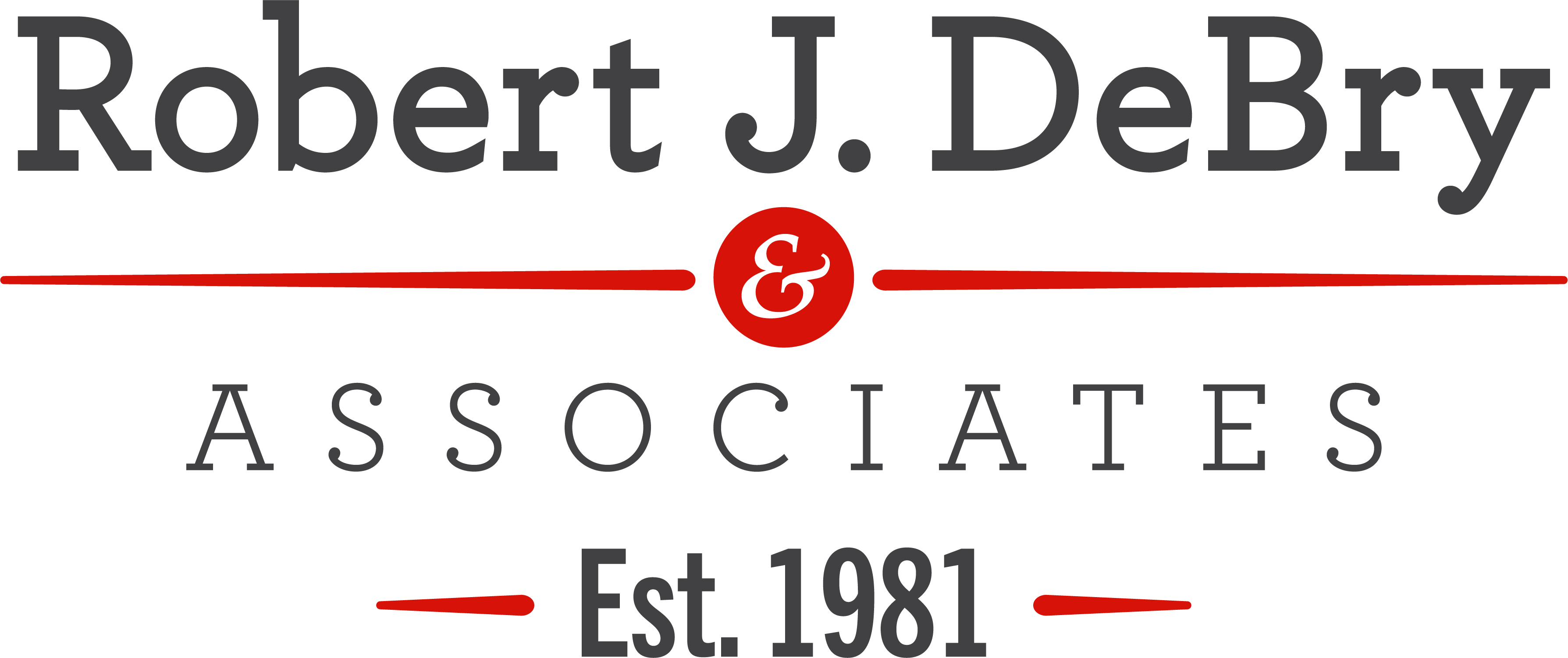Chapter 1: Introduction
Chapter 2: Tips for Equipment Safety at Work
Chapter 3: Work Safety: Why Using Tools Properly at Work is Essential
Chapter 4:Work Equipment Misuse Injuries
Chapter 5:Chapter 5: Work Injury Involving Power Tools
Chapter 6:The History of Occupational Health & Safety
Chapter 7: Summary of the Occupational Safety and Health Act of 1970
Chapter 8: Finding the Right Help
Chapter 1: Introduction
The Bureau of Labor and Statistics explains that most accidents in the workplace are from falls, slips, or exposure to harmful substances. By taking safety precautions, these accidents are often preventable. The Occupational Safety and Health Act of 1970 has also been outlined below to remind workers of safety tips and rights.
At Robert J. DeBry & Associates, we believe that your health and safety should always come first – for this reason, we offer the best personal injury lawyers to take care of any needs that might arise in case of an accident.
Chapter 2: Tips for Equipment Safety at Work
Below are essential tips for equipment safety at work to minimize the chances of you being potentially injured.
Stay Alert
The most crucial thing in any work setting, and especially those with many moving parts, is the knowledge of your surroundings. This step can quickly reduce incidences such as falls and slips. For instance, in the case of a wet floor, you will automatically watch your step or, if possible, avoid these areas.
Use the Right Protective Equipment
Proper personal protective equipment is essential when you are in a work zone that requires it. This applies to both the purpose of the equipment and, most importantly, the correct size. According to the Occupational Safety and Health Administration, OSHA, your employer is responsible for providing you with the proper personal protective equipment.
Attend Safety Training or Seminars
It is advisable to operate the machines you are confident using and adequately trained to perform. Many accidents in the workplace are avoidable through equipment safety education and seminars.
Chapter 3:The Proper Use of Tools
It’s tempting to use any tool at hand to get the job done. Unfortunately, using the wrong tool can result in severe injuries. When employers don’t provide the right tools to perform a task, employees experience accidents and suffer physical damage. If you’ve experienced a work injury, a personal injury lawyer at Robert J. DeBry & Associates can help. Keep reading to learn more about workplace safety and why using tools properly at work is essential.
How Can Using Tools Improperly Cause Injury?
OHSA published a 27-page booklet on using hand and power tools to ensure that all employees are being educated on using these devices. Devices are manufactured with safety in mind. Safety guards, operating controls and switches, and safety alerts only work effectively when the tool is utilized as the manufacturer recommended. When misused, those safety features built into the devices go out the window and raise the risks of accidents.
Using the Right Safety Equipment
Safely working with the appropriate tools also means using the correct safety equipment. Goggles, gloves, helmets, and shields are common safety equipment examples. Ensuring the use of this personal protective equipment keeps you and everyone around you safe. Tools and safety equipment often require training to ensure their safe use. Understanding when and how to use the correct tool plays a significant role in staying safe at work.
Chapter 4: Work Equipment Misuse Injuries
Employers should ensure that proper measures are established to protect workers’ safety when using work equipment. However, if the workers are not fully trained on the use of equipment or even fail to follow the necessary safety precautions, it can cause injuries.
If the employer does not take adequate steps to prevent work equipment accidents, injuries may be frequent. Robert J. DeBry & Associates is dedicated to ensuring that injured workers receive the compensation they deserve.
Several parts of the machine are likely to cause serious injuries. Below is a list of damages that can result from the misuse of work equipment:
Electrocution injuries
The risk of injury from using electricity is significantly connected to where and how it is used. Workers may suffer electrical shocks due to the use of exposed wires. If you find yourself in such injuries, it’s advisable to contact your injury lawyer for help.
Fractured bones
Disregarding safety standards in the workplace can lead to accidents that cause workers’ bone fracture injuries. Fractured bones can result in long-term complications.
Eye injuries
Improper use of work equipment can lead to eye injuries, including partial or complete blindness. One must be aware of sharp or toxic objects in the workplace. The use of eye goggles or safety glasses is highly recommended in the workplace.
What to do after work equipment injury
In case of work equipment injury, you can be entitled to workers’ compensation benefits. Always seek medical attention in case of work equipment injury. In addition, seeking an experienced personal injury lawyer is crucial to determine which claim best fits you.
Chapter 5: Work Injury Involving Power Tools
Power tools make work quick and easy, but injuries from power tools can happen just as quickly. Exhibiting caution and being diligent while working with power tools is key to preventing workplace injuries.
Injuries often occur because employees are not trained or do not adhere to simple safety guidelines. When working with power tools, wear safety goggles, engage safety guards, and keep work areas clear of debris.
Power Tools & Work Injuries
Injuries involving power tools usually affect the face and or hands and arms. These injuries can be devasting. In cases tiny shards of metal splinter off a power saw get stuck in an employee’s eye. This kind of eye injury can be prevented with safety goggles. Another example is workers nearly losing their fingers on a table saw because the safety guard was not engaged. Often, injuries can be prevented by checking safety guards and making sure debris, loose clothing, and body parts are clear of the machinery.
Power Tool Dangers
Power Tools are handy but can be dangerous. They can jam suddenly, misfire, be mishandled, or misused, causing minor or severe injuries. It is essential to follow safety guidelines and be adequately trained on operating power tools before starting a job.
Chapter 6: The History of Occupational Health & Safety
Today, workers have been given occupational health and safety guidelines, which help them avoid any personal injury in the place of work. But this has not always been the case. Previously, workplace safety and health regulations, although controlled by the department of labor, were under the business owner.
How did workplace health and safety become what it is today? The Occupational Safety and Health Act was enacted in the United States in 1970-1971. Famously dubbed the OSH act of 1970, its goal was to ensure healthy and safe working conditions by enforcing standards. The law addressed the known issues such as environmental toxins, cold and heat stress, and unsanitary conditions. The act also established two bodies geared to help meet its goal. The first, to pass safety and health standards, the Occupational Safety and Health Administration (OSHA), and the second, the National Institute for Occupational Safety and Health (NIOSH).
The First Standards
OSHA was officially established on April 28, 1971, after passing the Act of 1970. Five months after its establishment, OSHA issued the first standards, the building block of all current standards. These standards outlined businesses’ health and safety regulations, reporting protocols, and employer responsibilities. They made it possible that the employee would have the right channel to get the help they needed in case of a personal injury.
Since its establishment, OSHA has dramatically expanded its scope, ensuring that employees’ welfare is given the care it needs. Additionally, it has made it possible for firms like Robert J. DeBry & Associates to protect people. We serve those who have had the unfortunate case of getting into a personal injury in the workplace.
Chapter 7: Summary of the Occupational Safety and Health Act of 1970
Also known as the OSH Act, the Occupational Safety and Health Act of 1970 is a United States labor law governing occupational health and safety in both the federal government and private sector in the united states. As the name suggests, the Senate passed this Act on November 17, 1970, signed into law on December 17, 1970, by President Nixon, and later established on April 28, 1971. Before its passing, the workplace regulation of health and safety was unorthodox. This meant that the workers suffered most, especially in times of personal injury.
What Is Its Purpose?
The goal of the OSH Act was to assure healthy and safe working conditions for every working individual in the Nation, regardless of industry or job title. Promoting research and education in occupational health, safety, and other purposes would help meet this goal. It also would authorize enforcement of the standards developed by the Act.
To facilitate meeting the set goals, the Act established bodies, OSHA and NIOSH, where the first was to pass health and safety standards and the second for research purposes. These bodies have significantly impacted the safety of workers by eliminating causes of personal injuries in workplaces.
The occupational health and safety Act of 1970 has been the major contributor to the current state of workplace health and safety.
Chapter 8: Finding the Right Help
Employers are responsible for making the right tools available to execute the job safely. The use of these tools comes with the required training and safety equipment. If you or someone you love has suffered an injury due to a work accident, contact Robert J. DeBry & Associates to help you receive the settlement you deserve. Visit debry2021stg.wpenginepowered.com to speak with a representative 24/7.



